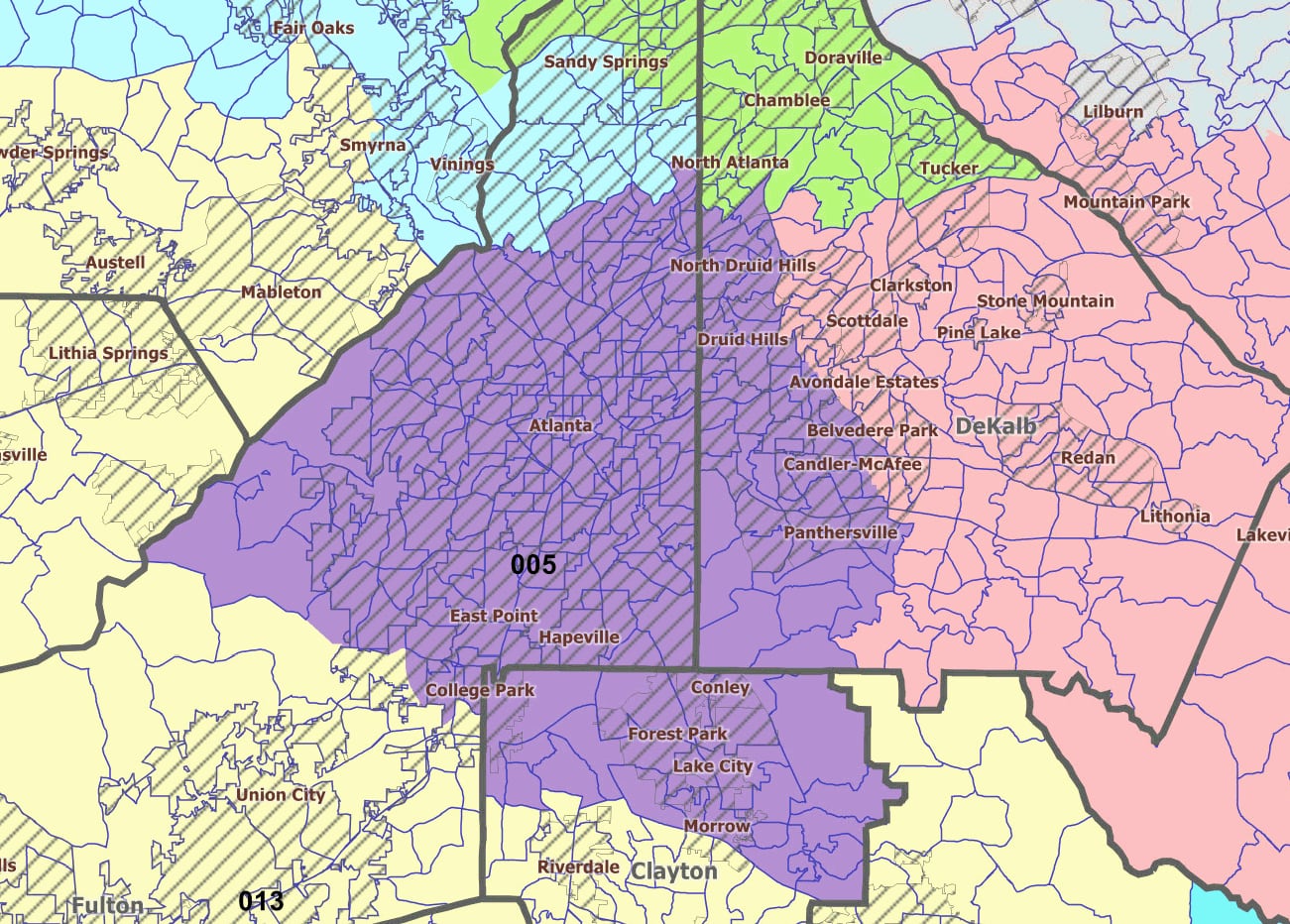If President-Elect Donald Trump believes Georgia's Fifth Congressional District is "falling apart," then he believes Atlanta is falling apart.
The Fifth Congressional District includes downtown Atlanta and much of central Fulton and DeKalb counties and the northern third of Clayton. Or, to put it in the language that Atlantans best understand: The Fifth Congressional District covers the majority of the land inside the Perimeter, as well as some of the suburban communities to the south and west.
It includes Buckhead and Bankhead, the Ritz-Carlton and the town of Rex, Lenox Square and Lakewood Heights -- and a lot of places in between.
» Map | Georgia congressional districts
Here's a quick data snapshot of Rep. John Lewis' district:
- Almost 750,000 people live there, according to the most recent estimates from the Census Bureau. The population is about 58 percent African-American, about one-third white and about 5 percent Asian.
- The median household income is about $48,000 -- slightly higher than Georgia's median, but below the national median of $56,000. (The national median figure over the past five years has been about $54,000.)
- About 1 in 6 families in the district lived in poverty in the previous year. The same dataset estimated the national rate to be about 1 family in 9.
- The unemployment rate in the district was about 8.2 percent when the Census Bureau released its estimates last year for the American Community Survey's 2015 one-year measurement. The same data set estimated the national unemployment rate at 6.3 percent, and the Georgia state rate at 7.1 percent. The national unemployment rate as of December, published by the federal Bureau of Labor Statistics, was 4.7 percent.
- Nearly nine out of 10 residents of the Fifth District were high school graduates or had education beyond high school, and about four out of 10 residents had at least a bachelor's degree, according to Census estimates.
- The largest single chunk of employed residents in Lewis' district, about half of the civilian work force, worked in a field grouped by the Census as "management, business, science, and arts occupations." The district includes Atlanta's downtown and main business district, and includes the headquarters of the Coca-Cola Company in Midtown and Delta Air Lines near Hartsfield-Jackson Atlanta International Airport. It also covers the campuses of Georgia Tech and Emory University as well as the federal Centers for Disease Control and Prevention and many of the city's major cultural and arts institutions.
- The largest single sector employing people in the Fifth District is construction (12 percent), followed by "management and remediation services" (11.9 percent) and "management of companies and enterprises" (11.8).
- In his Tweets about Lewis, Trump also hit on a continuing issue for Fifth District residents, Atlanta's crime problems, pegging the Fifth District as "crime-infested." Atlanta landed at No. 14 in the nation for its rate of violent crime when the Federal Bureau of Investigation released statistics last year that applied to 2015.
While overall crime in the city has been down, according to statistics cited by the Atlanta Police Department, Mayor Kasim Reed spoke last summer of a spike in the number of homicides and announced the creation of a gun violence task force.
But the rise in homicides in Atlanta mirrors a national trend in major cities across the country, and a New York Times analysis last year showed major jumps in murder rates in 25 of America's 100 biggest cities. Atlanta was not one of the 25.
The most recent violent crime rate for Atlanta and more than two dozen of its largest surrounding counties, according to the FBI, was 401 per 100,000 residents. That puts Atlanta at a rate similar to that of Clarksville, Tenn, which came in at 405. That's higher than the rate of the Dallas-Fort Worth area (338) but lower than Kansas City (536), Columbia, S.C. (651) and Columbus, Ga. (469).
AJC Data Specialist Jeff Ernsthausen contributed to this report.
About the Author
Keep Reading
The Latest
Featured




